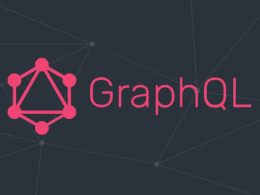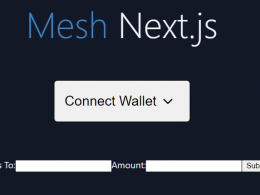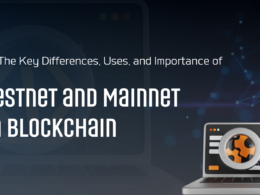
The ever-growing Cardano community is dissatisfied with the governance model proposed in CIP 1694. The model splinters debates and arguments characterized by misinformation and divisiveness. While CIP 1694 provides the first technical, tactical, and functional governance model, it fails to incorporate a mechanism for drafting the Cardano constitution despite relying on a constitutional community.
And before going further, a call to the Cardano community to think about the processes of creating governance action as specified in the CIP 1694 model, particularly the role of Project Catalyst in creating withdrawal treasury actions. CIP 1694 fails to showcase results from four years of treasury experimentation into the breadth of foundational governance. That aside, membership in the constitutional committee is put away as an “off-chain issue,” yet the committee is the fulcrum to properly running the governance model.
This post is a collection of insights into a new model of governance, the CIP 1776, which outlines a functional foundation for decentralized decision-making. Unlike other proposed models, it describes a new approach to technically and legislatively complete criteria for on-chain governance. The model leverages the existing Cardano mechanism and correctly utilizes the seven existing governance keys providing a technically achievable and scalable foundation.
An Overview of the Current Governance Design
This seven-key and on-chain Cardano governance architecture was established in the Shelley ledger phase and can alter protocol parameters, including initiating “hard forks” and moving ADA between treasuries and reserves, even withdrawing from the two sources.
This operation model allows you to initiate a governance action using particular transactions if many of the authorizations from the governance agree. In this case, at least five of the seven keys on the Cardano Mainnet. The transaction body possesses fields containing proposed governance actions like amending protocol parameters and initiating funds transfers. Each action prompts a single governance action, but individual actions have more effects, for instance, altering two or more protocol parameters.
In the CIP 1664 specifications, the transaction body field number 6 updates protocol parameters. The Move Instantaneous Rewards (MIR) certificates handle reserve and treasury movements while authorized governance actions run at epoch boundaries when called up. More on this later.
The CIP 1694 model can be found here.
What are the Limitations of the Shelly Model?
As the Cardano community moves forward to the Voltaire era, this proposal aims to remedy several limitations and offer a simple, scalable, and mutable model for governance. The Shelly model needs to allow active on-chain engagement among ADA holders. Currently, protocol changes are encompassed by discussions with selected community members. The process is, however, driven by founding entities like IOG, the Cardano Foundation, and Emurgo; all are holding the seven governance keys.
Another concern is monitoring treasury movements, a critical matter, by the way. While it is difficult to monitor, there are essential needs for establishing transparency and additional control layers over these transactions. Regarding “Hard Forks,” there’s no clear distinction between them and other protocol alterations.
Another binding domain to check is using the Cardano blockchain to record shared ethos. And why this? Despite Cardano’s founding entities and community members having a shared vision, some stakeholders still do not.
What is the CIP 1776 All About?
CIP 1776 proposes an inclusive, decentralized, and balanced on-chain governance model for the Cardano network that balances voting leverage between The Constitutional Court, Stake Pool Operators, and Delegated representatives. Every governance action will have to be ratified by all three entities. Ratified actions will then be enacted on-chain; through a particular set of rules.
The goal is to create a system that asserts that no single entity or group holds influence or power over Cardano’s network decision-making process and introduce a minimum viable constitution, a framework for governance and decisions. CIP 1776 proposes a modular governance system and a review of Cardano’s on-chain governance. Under this model, any Cardano user can submit a governance action for consideration.
At the top of the governance is The Stake Pool Operators will have a single vote cast on governance matters provided they satisfy the eligibility needed for participation. Multi-pool operators can exist, accounted for in the extensive testing for this governance model and balanced by legislation agreement requirements for Delegation Representatives.
The Delegated Representatives are at the bottom of the governance and cast votes weighted by their ADA holdings in Lovelace. Anyone can represent themselves. In this section, appointing a DRep follows a convention similar to delegating to a stake pool. It means; you can delegate your voting rights to another user’s wallet, and many users can collectively delegate their power (their ADA and that delegated to them by others) to another user through a cascade-style governance model. Suppose you shift your attention to the case of institutional holders, exchanges, individuals with considerable ADA holdings, and enterprise addresses. In that case, they’ve been accounted for in the legislation ratification requirements for all three participants.
When it comes to The Constitutional Court, it’ll be made up of seven independently elected representatives. It will adjudicate that all motions approved by Delegated Representatives and Stake Pool operators are constitutionally based and ratified. They can be individuals, constitutional committees, organizations, or a combination of the three if they meet all requirements for outstanding as a key holder in The Constitutional Court.
Final Words
The gaps in the Shelly governance operation model have inspired thoughts and gave birth to a new approach to governance, CIP 1776. The CIP 1776 structure introduces inclusivity, decentralizes, and balances the existing model. It introduces a viable constitution and a framework for governance decisions through three entities (The Constitutional Court, Stake Pool Operators, and Delegated Representatives). The idea is a system where no team or group overlooks the other.
You can check out the proposal here.









